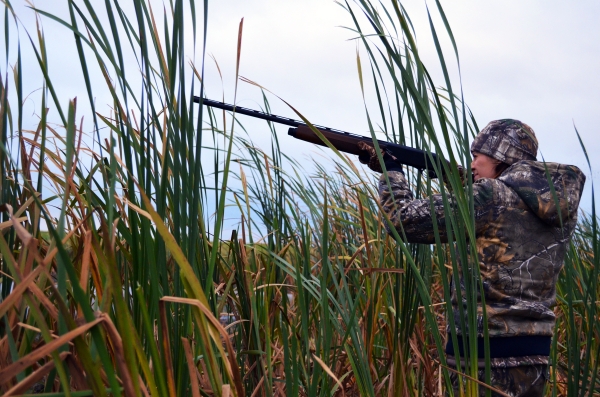
Hunting regulations are designed to provide safe recreational opportunities through wise use of renewable wildlife resources. Hunting is permitted in accordance with the Federal regulations governing public use on National Wildlife Refuges as set forth in Title 50 of the Code of Federal Regulations. Hunting will be in accordance with applicable State of Idaho regulations subject to the conditions stated below. Non Toxic Shot is required. Brochures maybe be obtained by mail, at the refuge headquarters or from the Refuge website.
Camas National Wildlife Refuge is open to waterfowl, upland game (Bird Only) and elk (special regulations) hunts. There are 3 units:
Central Unit : Elk Only (Special Regulations Apply)
North Unit: Waterfowl, Upland Game (Bird only) and Elk (Special Regulations Apply)
South Unit: Waterfowl, Upland Game (Bird Only) and Elk (Special Regulations Apply)
Waterfowl and Upland Game (Bird Only) Hunts
Must Follow State of Idaho Hunt Regulations for these hunts
Must use Non-Toxic Shot
Elk (Special Regulations Apply) Hunts
Follow State regulations for Unit 63.
Elk hunters must carry a valid Idaho Department of Fish and Game (IDFG) hunting license and elk permit for the management Unit 63 antlerless only elk hunt along with a signed limited draw permit from Camas NWR.
Hunters must wear a minimum of 36 square inches of blaze orange, and a blaze orange head covering while hunting on the Refuge.
Harvested Game must be packed out on foot. Use of horses or other pack animals for hunting or game removal is prohibited.
Each permitted hunter may be accompanied by up to two unarmed companions. Companions must comply with the blaze orange requirement.
Accessibility Information
Equal opportunity to participate in and benefit from programs and activities of the U.S. Fish
and Wildlife Service is available to all individuals regardless of physical or mental ability.
For more information please contact the U.S. Department of the Interior, Office of Equal
Opportunity, https://www.doi.gov/pmb/eeo/public-civil-rights.
Disabled hunters may obtain a Special Use Permit (SUP) prior to hunting for hunting access
and/or retrieval of game.
Safety
At any time, hunters may encounter elk. Elk can behave in an unpredictable manner, and
hunters should use caution when in close proximity to these animals.
Hunters must wear a minimum of 36 square inches of blaze orange, and a blaze orange head
covering while hunting elk on the Refuge.
Firearms
Persons possessing, transporting, or carrying firearms on National Wildlife Refuge System
lands must comply with all provisions of State and local law. Persons may only use (discharge)
firearms in accordance with refuge regulations (50 CFR 27.42 and specific refuge regulations
in 50 CFR Part 32.)
Vehicles
Licensed motor vehicles and ATVs/UTVS are permitted only on public use roads or parking areas that are designated for that use.
Access
Hunters may access the Refuge one- half hour before legal shooting hours until one-half hour after legal sunset, unless extra time is needed for removing harvest game.
The area open to elk hunting on the Refuge includes two areas currently open to bird hunting, plus most of the Refuge, excluding our main public use area. Please see our hunt map.
Park only in designated parking areas and do not block any roads or gates from the general public or Refuge staff. Please keep in mind that the auto-tour route is not in the area that is open to hunting and should not be used for access parking.
If a hunter must retrieve a dead elk from an area on the Refuge that is closed to hunting, report the retrieval (208)662-5423 as soon as possible.
Special Considerations
Hunters must maintain a distance of at least 400 meters (1/4 mile) of roosting Sandhill
cranes. The Refuge may also selectively close areas, as detected, to protect sensitive wildlife
resources within the hunt area with spatial buffers. As closures are implemented, the Refuge
will supply hunt permit holders with maps of closures to hunting activity.
Camping is prohibited on Refuge. Open fires are prohibited on Refuge.
Removal of any historical artifacts or natural objects found on the Refuge, including shed
antlers, is strictly prohibited.
Hunters are asked to be aware of their target and beyond because of
private homes and farms that are near the Refuge boundary, Interstate 15 that forms the east
boundary, Refuge employees, and Refuge visitors that could be present in certain areas.

